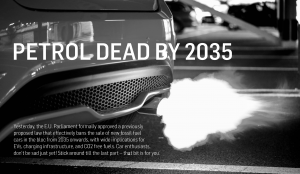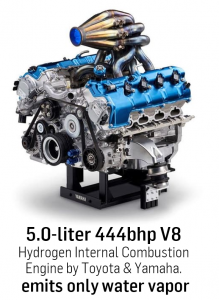Petrol Dead by 2035

The Law Approved on Valentine’s Day 2023
It is already well known that the European Union aims to completely decarbonize its economy by 2050, which also includes its transportation network, a sector that accounts for up to 15% of the bloc’s CO2 emissions. Under the assumption that a vehicle’s average lifecycle is about 15 years, it follows that – in order to achieve net zero by 2050 – the last of the CO2-emitting cars should be produced and sold no later than 2035. In concrete terms, the newly approved piece of legislation requires that carmakers achieve a 100% cut in CO2 emissions from new cars sold by 2035, effectively making it impossible to sell new fossil fuel-powered vehicles after 2035 in the 27-country bloc – existing fossil fuel cars and their second-hand market remaining unaffected. Furthermore, this law also requires that carmakers achieve a 55% cut in CO2 emissions (from new vehicles sold) by 2030, relative to CO2 emission levels in 2021. The law does not seem to exempt synthetic fuels (e-fuels) or biofuels, regardless of their carbon neutrality. Needless to say, this legislation will have dramatic implications for the European automotive industry as a whole. Could this law finally spell the end of the mighty internal combustion engine?
Check our white paper Hydrogen: The Bright Future of Energy here.
Spurring EV Economies of Scale and R&D Is the Goal
According to E.U. vice president Frans Timmermans himself, one of the main motivations behind the legislation – other than reaching net zero by 2050 – is to make electric vehicles become the focal point of R&D, innovation, and investment within the European Union in order to keep the domestic EV industry competitive in the face of China or the United States. “Let me remind you that between last year and the end of this year, China will bring 80 models of electric cars to the international market” he stated, adding that “we need to compete with that“ and that “we don’t want to give up this essential industry to outsiders”.
Concurrently, several automakers within the E.U. like Volkswagen (the brand, not the group) and Ford already announced plans to exclusively sell electric vehicles even sooner that the hard deadline: namely, by 2030.
Charging Infrastructure
Currently, there are around 400,000 charging stations in the European Union – far fewer than the estimated 6.8 million charging points required to meet the EU’s 2030 goals of reducing CO2 emissions from new cars by 55% (a goal known as ‘Fit for 55’). Even in the most conservative scenario, the EU will need at least 3.4 million operational public charging points by 2030. It goes without saying that achieving a 100% reduction in CO2 by 2035 would require even more public charging points. Furthermore, under this legislation, the EU requires that member states build EV charging points every 60 km on main traffic routes by 2026. In this light, we can expect charging infrastructure projects to be undertaken on a massive scale over the next few years, also implying further investments into renewable-energy capacity and into electricity grid upgrades to distribute electricity to the charging points. All in all, these cumulative investments may reach upwards of EUR 240 billion by 2030. Based on current figures, Europe’s rate of installing EV charging points will have to quadruple by 2025.
Check our white paper Hydrogen: The Bright Future of Energy here.
Green Hydrogen Still Permitted
To electrify its entire car fleet, Europe will need vast amounts of lithium, cobalt, and other rare earth minerals needed for battery production. Hence, the E.U. is at risk to face critical mineral shortfalls over the next 15 years. Moreover, most of these raw materials currently come from China – a situation posing some geopolitical risk.
In this light, hydrogen can offer a diversification option and ease the global supply chain of lithium and other such required metals. As long as it’s produced in a carbon-free way, (green) hydrogen is permitted to fuel cars after 2035 according to the legislation passed yesterday. When used in a fuel cell, hydrogen generates electricity and takes the role of a battery – the only emission being water vapor. In fact, you can already buy a hydrogen fuel-cell electric car today: the Toyota Mirai. Furthermore, whereas battery power EVs make a lot of sense for short-range transportation, hydrogen fuel cell EVs may be much preferred in the case of long-range transport, as refueling a hydrogen car would take minutes while charging a car battery may even take hours.
Dear Driving Enthusiasts, This One Is for You

